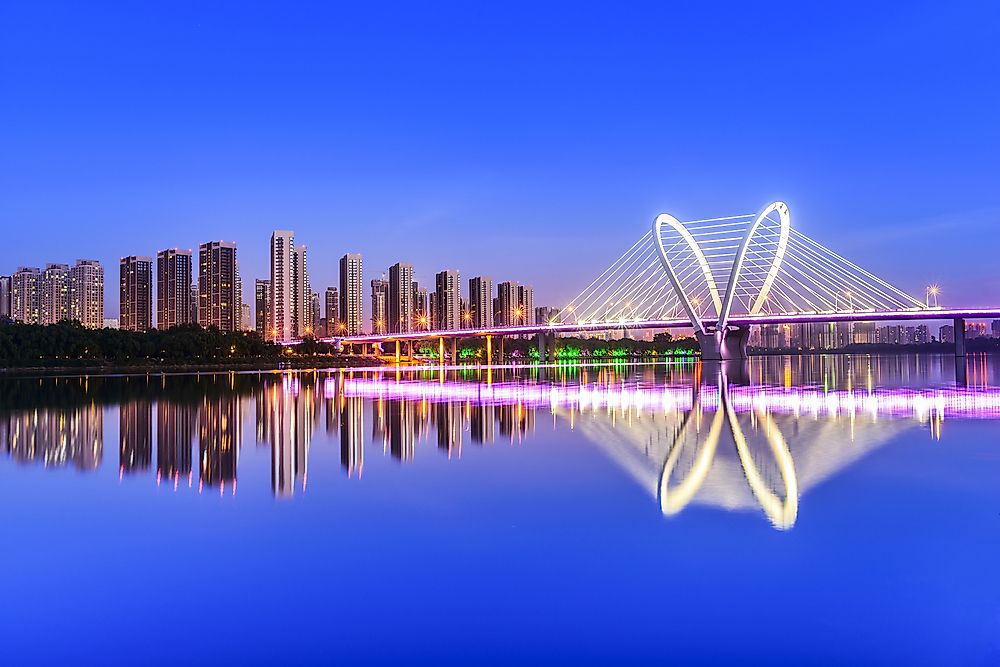Shenyang – The Capital Of Liaoning Province

Liaoning is a Chinese province located in the northeastern part of the country. It has an area of 145,900 square km that makes it the 21st largest Chinese province. Liaoning is home to 43,900,000 individuals (as of 2012), and that makes it the country’s 14th most populous province. Liaoning is the southernmost of the northeastern Chinese provinces and is very strategically located. The Yellow Sea borders the province to the south. Liaoning also has an international border with North Korea. The western part of the province is dominated by a hilly landscape. The central part of Liaoning is, however, relatively flat and has several rivers flowing through this part. The highest part of Liaoning is the peak of the 1336 m high Mount Huabozi. Liaoning experiences a continental monsoon type of climate.
Capital Of Liaoning
Shenyang is the capital of Liaoning. It is located in the central part of the province. The landscape of Shenyang changes from the relatively flat alluvial plain of the Liao River system in the west to high forested mountains in the east. The main urban area of Shenyang is located north of the Hun River and is surrounded by three artificial rivers called the South Canal, Xinkai River, and the Weigong River. These rivers are all connected to each other via several channels. Shenyang is a green city with many parks and gardens along its waterways.
Demographics Of Shenyang
As of 2017, Shenyang was home to 8,294,171 individuals and had a population density of 640 persons per square km. It is one of the most ethnically diverse cities in China with at least 38 of the 56 recognized ethnic groups of the country residing there. The Han Chinese group dominates the population of Shenyang, accounting for about 91.26% of the population. The city also has a religiously diverse population with numerous mosques, churches, temples, and other places of worship.
History Of Shenyang
Evidence of 8000-year-old human settlements in the area that is now Shenyang has been discovered by archeologists. The city was first established in around 300 BC by Qin Kai, a Yan general. It was then known as Hou City. Around 350 years later, Hou City was abandoned after it was invaded and destroyed by Donghu. It once more came to life during the rule of the Liao dynasty and was named Shenyang Circuit during the Yuan dynasty. Shenyang gradually developed over the centuries to become the Manchu capital in 1625 and later the secondary capital of the Qing dynasty. The city was then known as Mukden. It got back its old name of Shenyang in 1914 and soon began to expand rapidly. Many heavy industry factories were established in the city in the first half of the 20th century. Soviet troops captured Shenyang in 1945. From 1946 to 1948, Shenyang was a stronghold of the Kuomintang but the communists captured it in 1948. After the formation of the People’s Republic of China, Shenyang became its capital in 1949.
Economy Of Shenyang
The capital city of Liaoning is a major industrial center and serves as the Shenyang Economic Zone’s core city. Heavy industries like defense, heavy equipment, aerospace, etc., are the biggest industries in Shenyang. Such industries were already well-developed in the region by the Second World War. In the 1970s, the city’s economy was at its peak and it was regarded as one of the country’s top three industrial centers. A decade later, however, the planned economy failed, and Shenyang’s economy experienced a rapid downfall. Thousands of people were laid off at that time as state-owned factories became bankrupt. Today, the economy is once more back to a stable state. The software and electronics industries are fast developing in Shenyang. The services sector, especially banking, has also experienced major growth.











